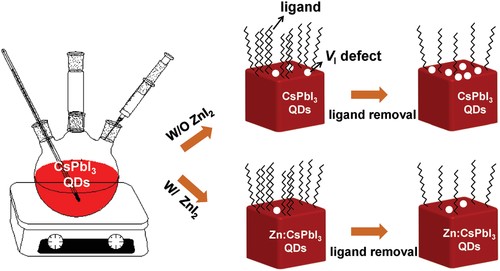All‐Inorganic CsPbI3 Quantum Dot Solar Cells with Efficiency over 16% by Defect Control

Published on Advanced Functional Materials (21 October 2020)
Author(s): Linlin Zhang, Cuiting Kang, Guizhi Zhang, Zhenxiao Pan*, Zhaoshuai Huang, Shuaihang Xu, Huashang Rao, Hongbin Liu, Shengfan Wu, Xin Wu, Xiaosong Li, Zonglong Zhu*, Xinhua Zhong*, Alex K.‐Y. Jen
Abstract
All‐inorganic CsPbI3 quantum dots (QDs) have shown great potential in photovoltaic applications. However, their performance has been limited by defects and phase stability. Herein, an anion/cation synergy strategy to improve the structural stability of CsPbI3 QDs and reduce the pivotal iodine vacancy (VI) defect states is proposed. The Zn‐doped CsPbI3 (Zn:CsPbI3) QDs have been successfully synthesized employing ZnI2 as the dopant to provide Zn2+ and extra I−. Theoretical calculations and experimental results demonstrate that the Zn:CsPbI3 QDs show better thermodynamic stability and higher photoluminescence quantum yield (PLQY) compared to the pristine CsPbI3 QDs. The doping of Zn in CsPbI3 QDs increases the formation energy and Goldschmidt tolerance factor, thereby improving the thermodynamic stability. The additional I− helps to reduce the VI defects during the synthesis of CsPbI3 QDs, resulting in the higher PLQY. More importantly, the synergistic effect of Zn2+ and I− in CsPbI3 QDs can prevent the iodine loss during the fabrication of CsPbI3 QD film, inhibiting the formation of new VI defect states in the construction of solar cells. Consequently, the anion/cation synergy strategy affords the CsPbI3 quantum dot solar cells (QDSC) a power conversion efficiency over 16%, which is among the best efficiencies for perovskite QDSCs.

Read more: https://doi.org/10.1002/adfm.202005930